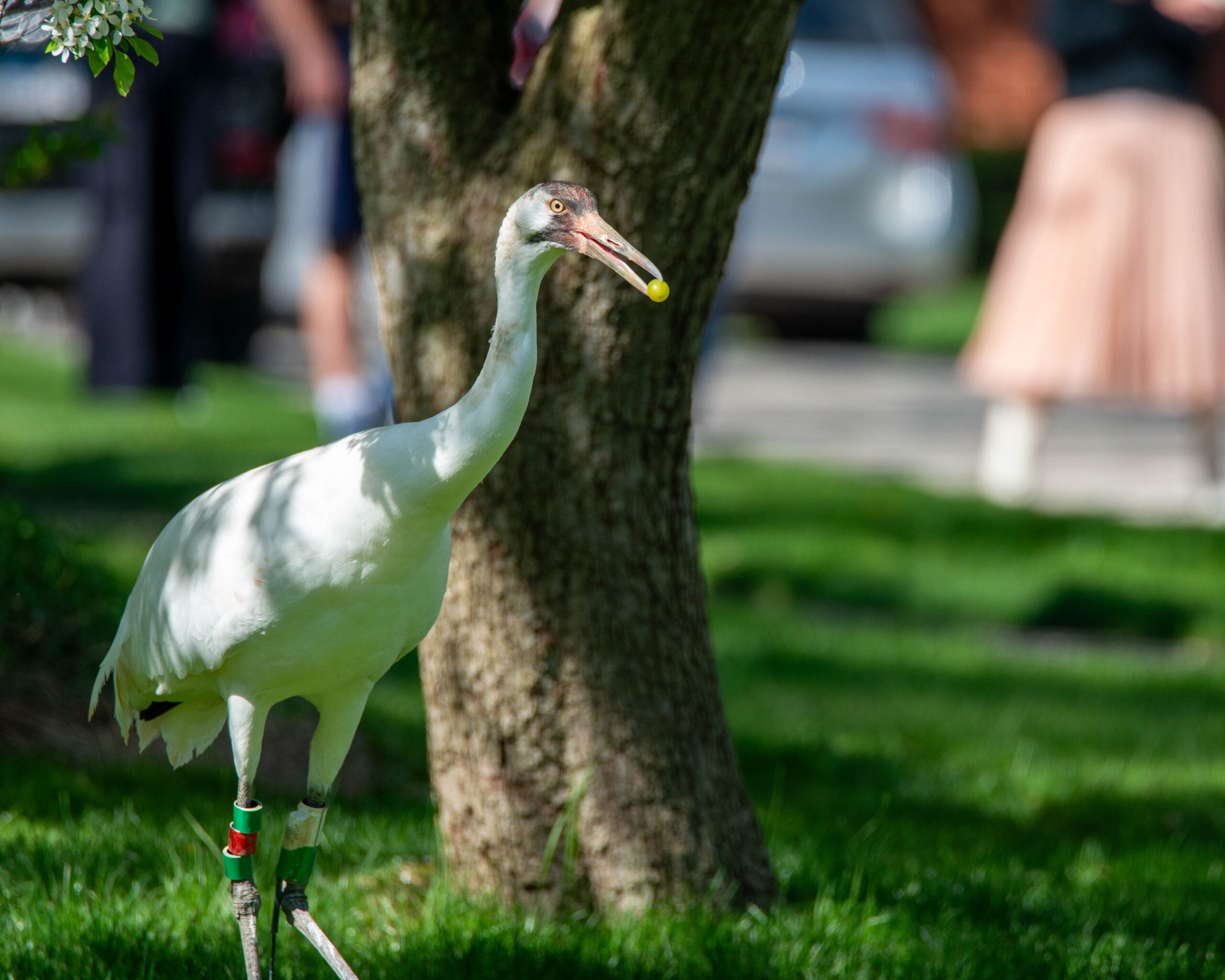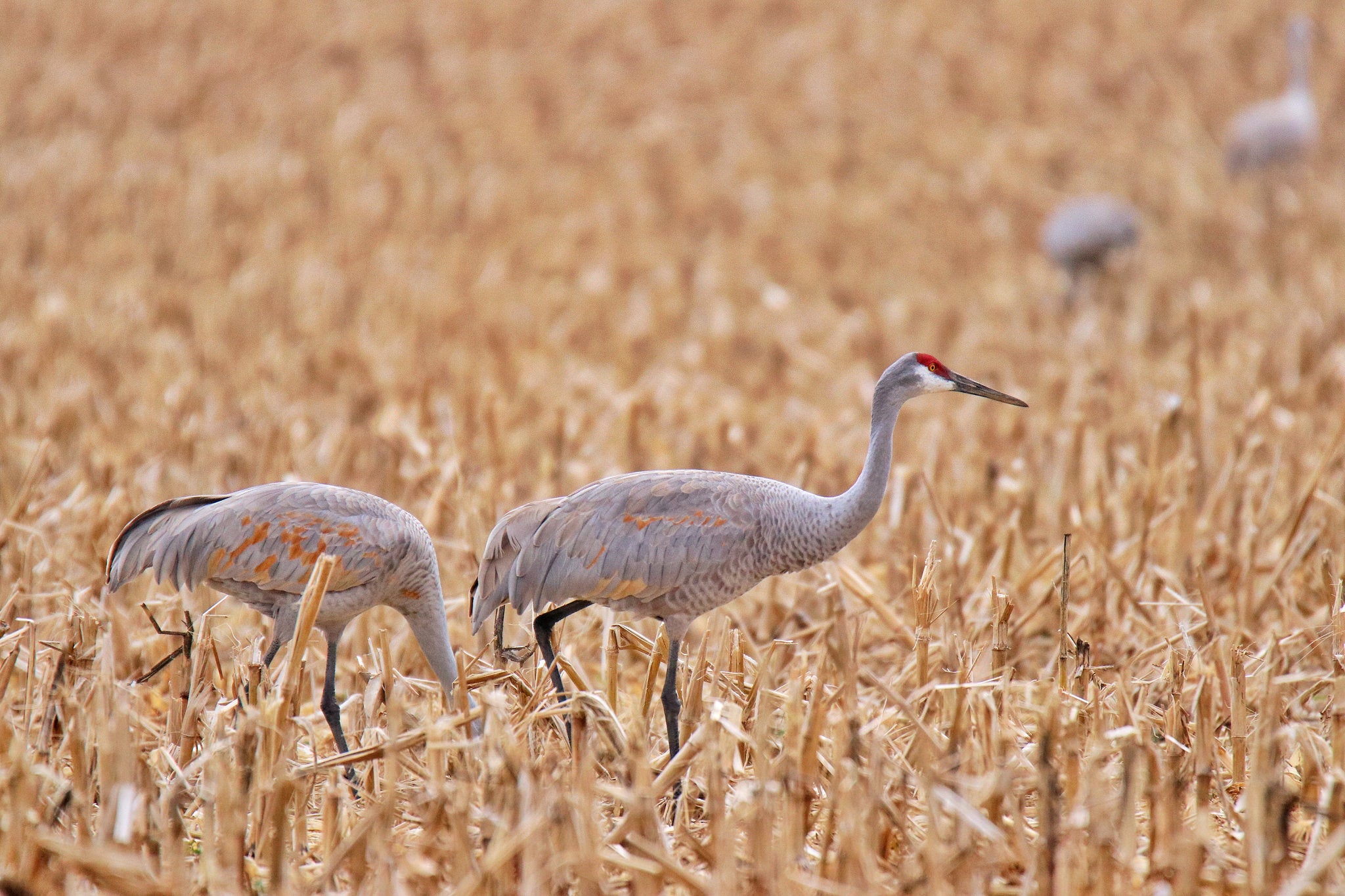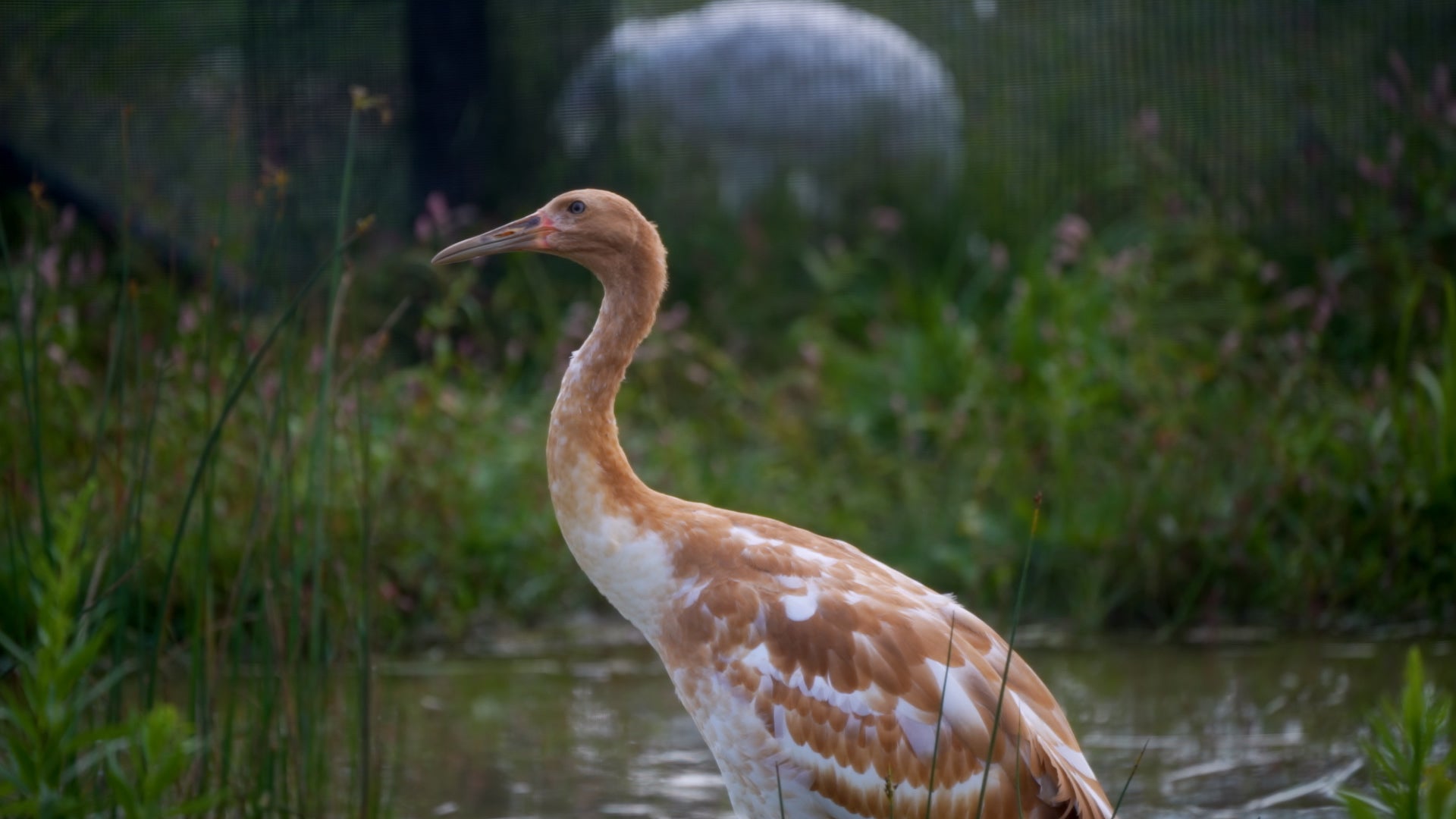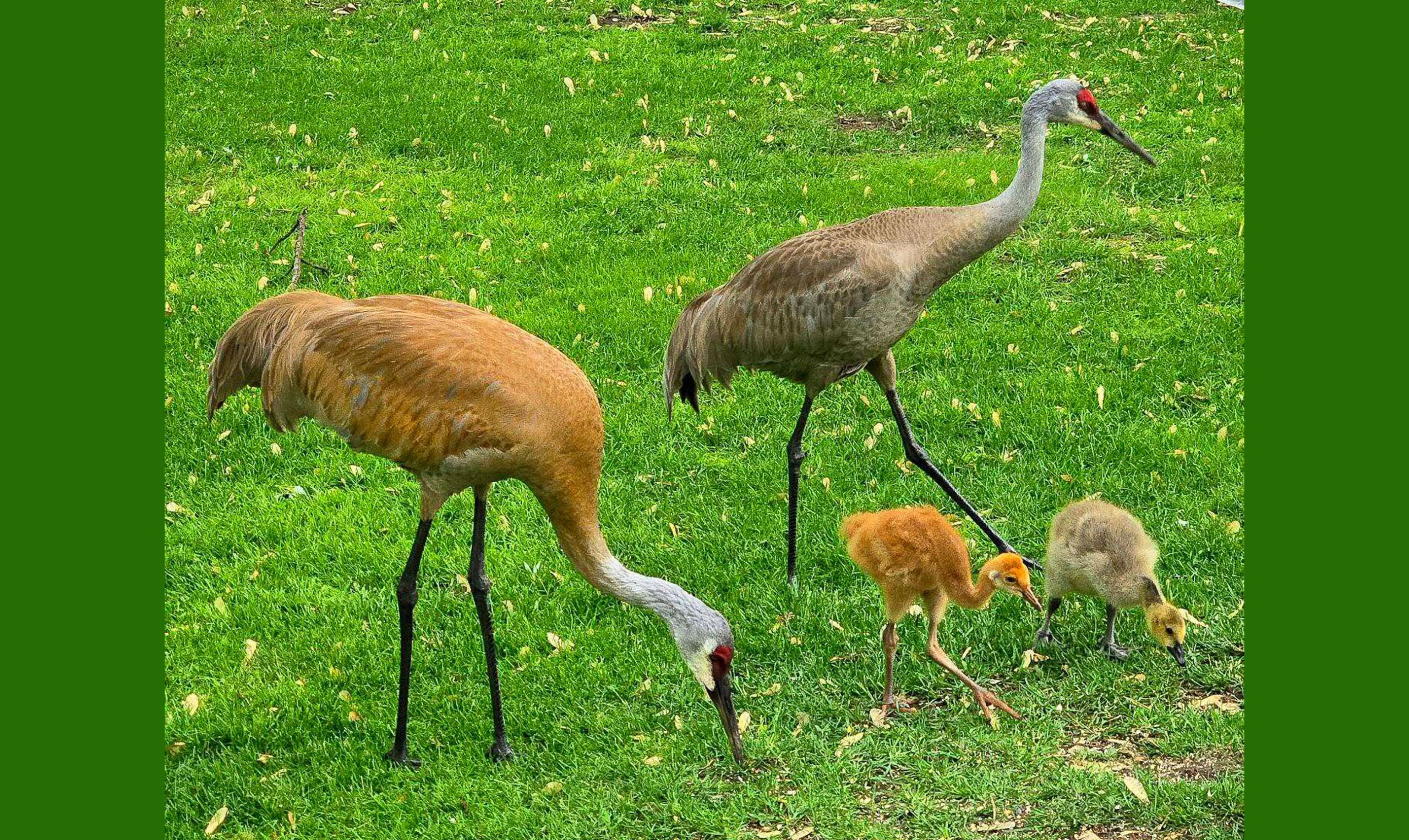An adolescent whooping crane is safely exploring Horicon Marsh after she veered off path on her first independent northern migration.
Identified as 16-23 or Animal, the young endangered crane was reported by local birders in a residential neighborhood of Wilmette, a suburb of Chicago, Tuesday morning.
The International Crane Foundation, Illinois Department of Natural Resources, United States Fish and Wildlife Services, a veterinarian and volunteers all assisted in bringing the lost crane back home to Wisconsin.
News with a little more humanity
WPR’s “Wisconsin Today” newsletter keeps you connected to the state you love without feeling overwhelmed. No paywall. No agenda. No corporate filter.
“All the stars aligned and it was just really great,” said Anne Lacy, director of Eastern flyway programs-North American for the International Crane Foundation.
Civilians stepped in to help
Tamima Itani saw a post on social media Tuesday morning about a whooping crane wandering the streets of Wilmette. As a member of the Chicago Ornithological Society and lead volunteer coordinator for the Chicago Piping Plovers, she is familiar with bird conservation. She drove a quick five minutes to help keep an eye on the crane before the proper authorities arrived.
“She was just standing there. She wasn’t doing much. She was under a tree (and) looked beautiful, very calm,” Itani said.
The International Crane Foundation is part of a partnership trying to rebuild the species numbers in the wild. The endangered birds have been raised in captivity as chicks by staff wearing crane costumes. The costumes keep the young birds from becoming too acclimated to humans before they are released into the wild.
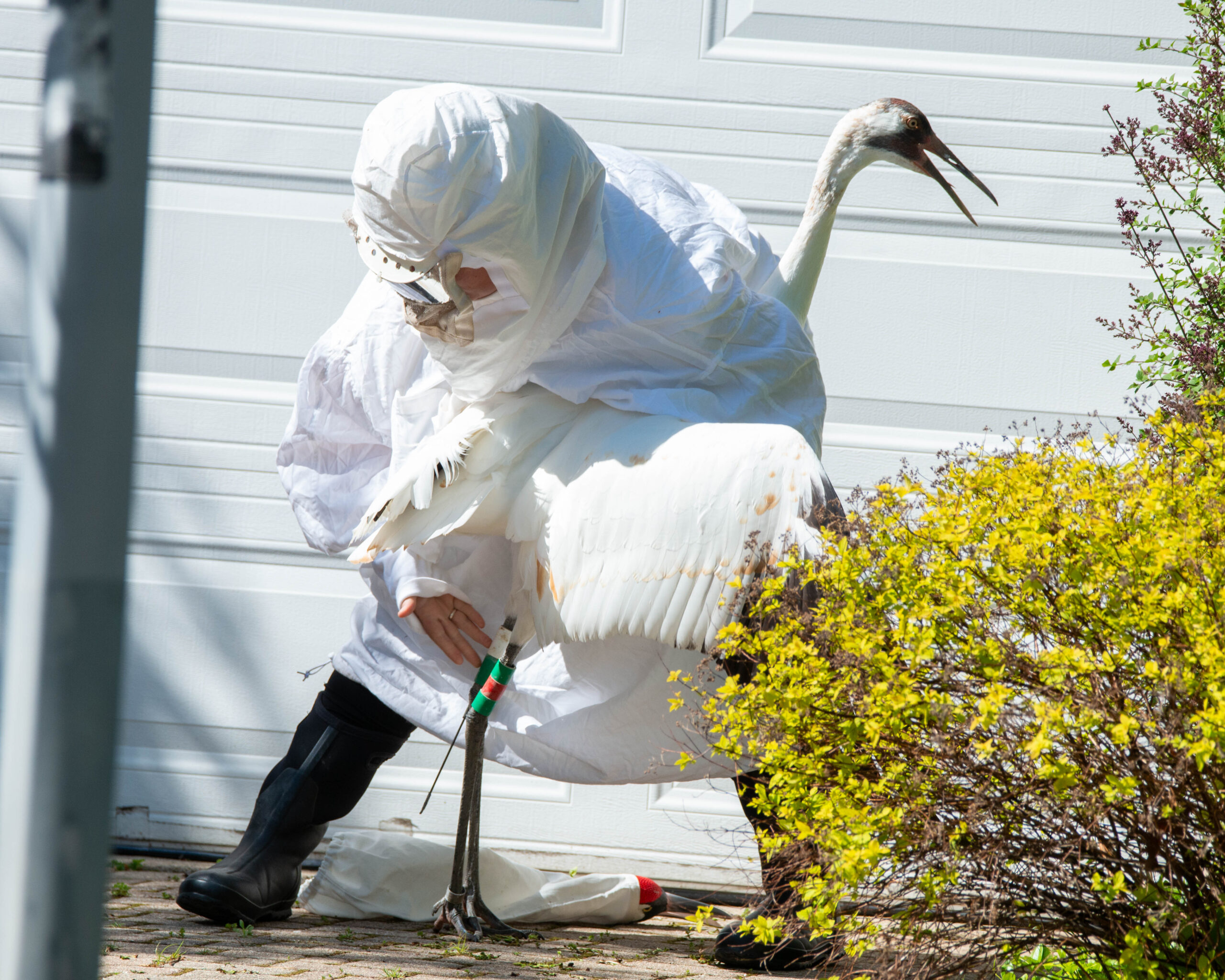
According to Lacy, Hillary Thompson with the International Crane Foundation arrived, put on a costume and lured the crane over with a green grape. Thompson gingerly picked her up and covered the bird’s eyes to calm her down. A veterinarian did a health check before a new transmitter was fastened to the crane’s leg and transported to Wisconsin.
Back in Baraboo, Lacy was organizing the proper permits to bring the crane across state lines.
“She had to call an Uber to get back to Horicon. But now that she’s there, she can make her way around, and she’ll recognize other whooping cranes when she sees them,” Lacy said.
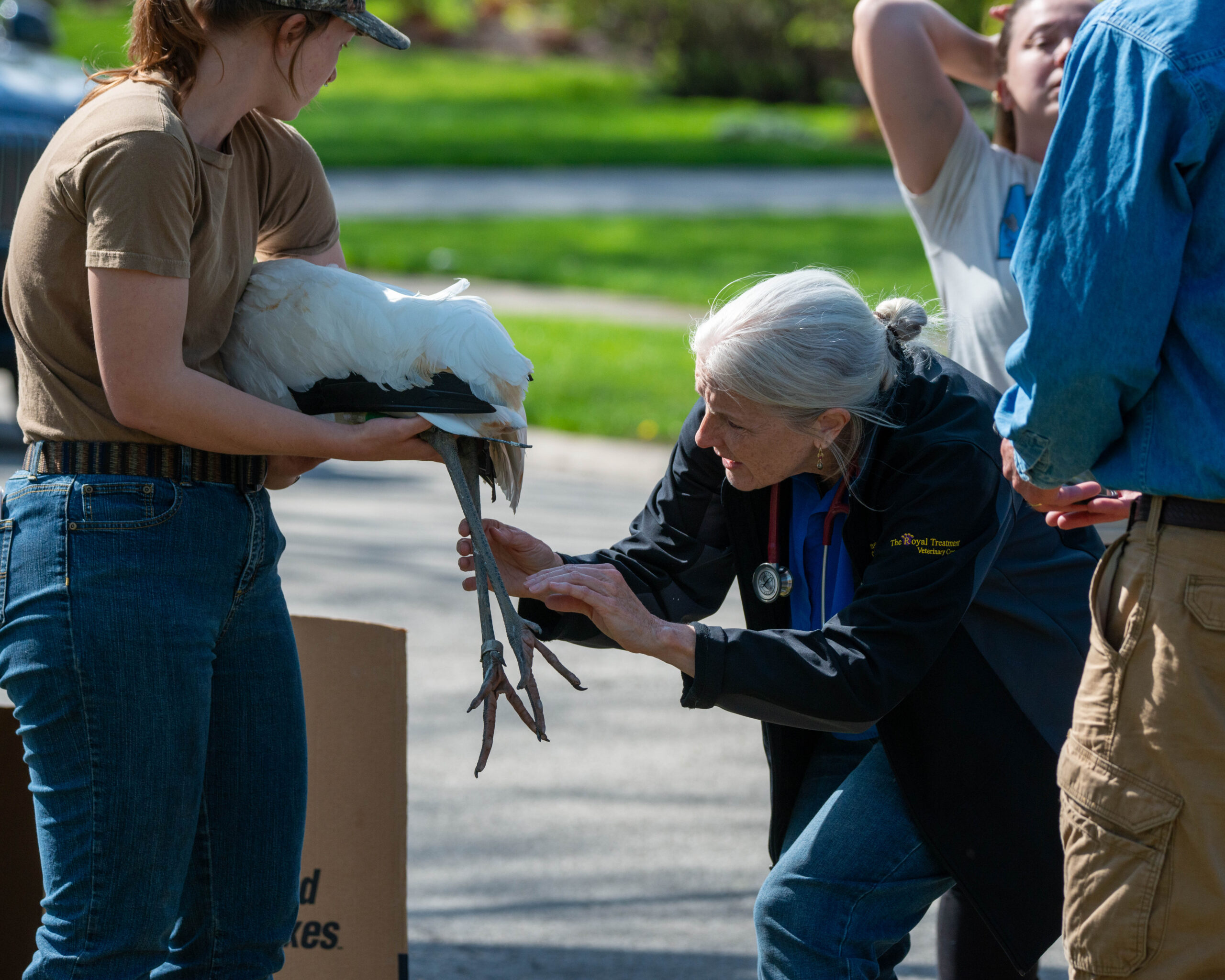
Where did she come from?
The crane was migrating to Wisconsin from Indiana where she spent the winter.
The U.S. Fish and Wildlife has an ongoing whooping crane recovery plan. The ultimate goal is to recover the whooping crane and remove it from the list of endangered species.
The species’ total population is estimated at just 831 individuals globally, according to the International Crane Foundation.
More than 10,000 whooping cranes once populated North America. Population declines were caused primarily by hunting and destruction of habitat.
The foundation is supplementing the whooping crane population in Wisconsin, hoping the birds can nest in the wild and become self-sustaining. Until then, they are raised in captivity with adult cranes. They are released into wetlands and learn the migration route from older cranes.
“This whooping crane project in particular, people have a true affinity for it,” Lacy said.
The crane found in Chicago was born and raised in captivity last summer. It was released last fall with five other whooping cranes into Horicon Marsh through Direct Autumn Release.
This was the bird’s first northern migration on its own.
Itani said it was a “no-brainer” to help out.
“Each individual in the population is extremely precious. And making sure that each one survives to the best of our abilities is important,” Itani said.
Why did she get lost?
Lacy said there is no way to know for certain why the crane separated from her cohort and landed in a residential yard. It is possible the crane was tired, hungry or lost.
It is not safe to connect one incident like this with bigger trends like climate change or human encroachment, Lacy said. But, she added, dodging airplanes and communication towers “adds peril” to animals as they migrate.
“All of eastern U.S. is human-dominated, and they’re making their way through some really big risks,” Lacy said.
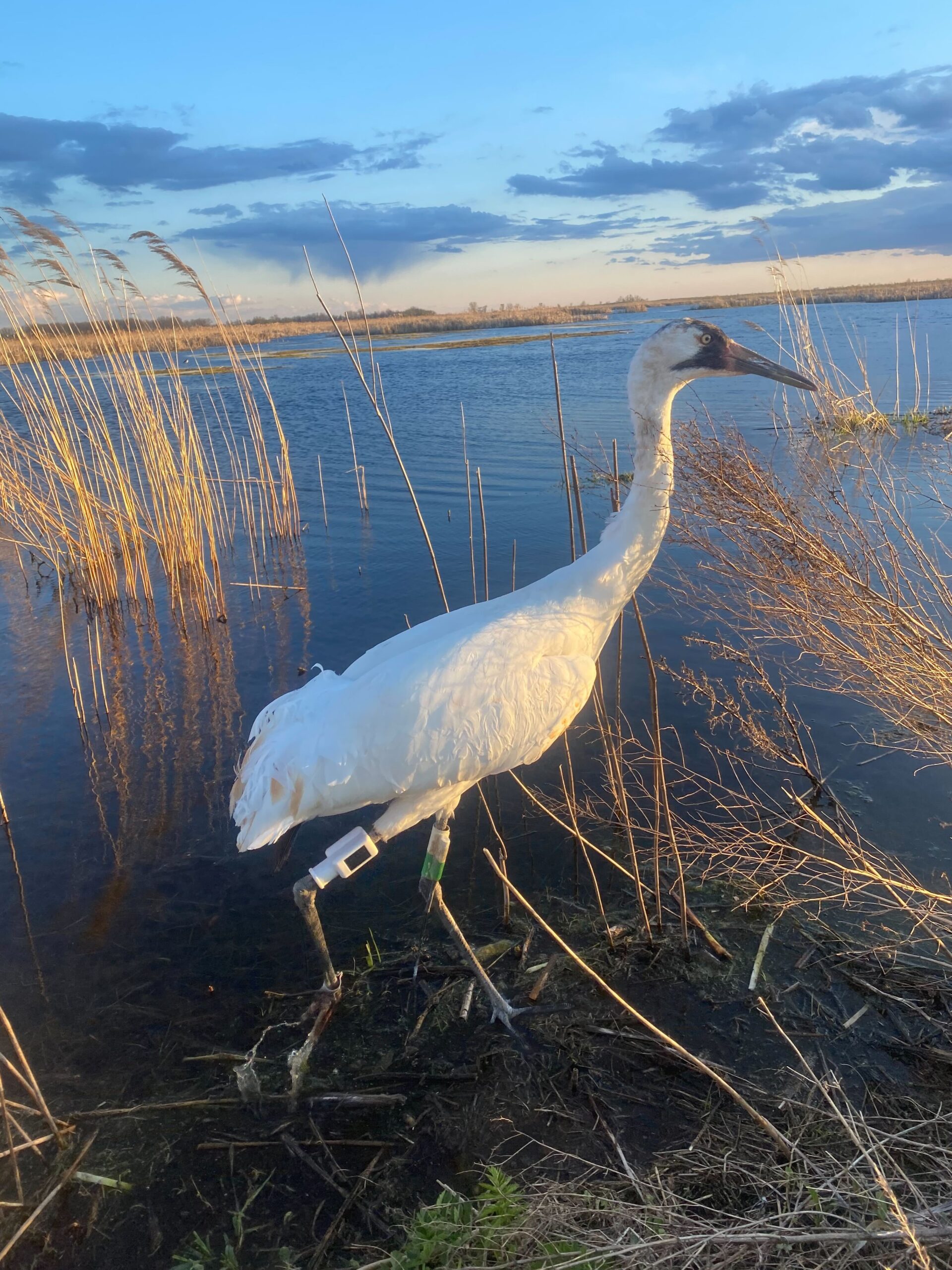
The crane was re-released into the Horicon Marsh on Tuesday night, getting reacquainted with her surroundings.
“She (was) flying around. She tasted the water. She’s smelling the air and like, ‘OK, yeah, this is familiar,’” Lacy said.
Lacy said there is no way to prevent migrating cranes from heading off course, but she says her team has developed the skills so everyone is prepared should this happen again.
Lacy said the alert from the local residents was “the beginning of this very happy ending.”
Wisconsin Public Radio, © Copyright 2026, Board of Regents of the University of Wisconsin System and Wisconsin Educational Communications Board.
